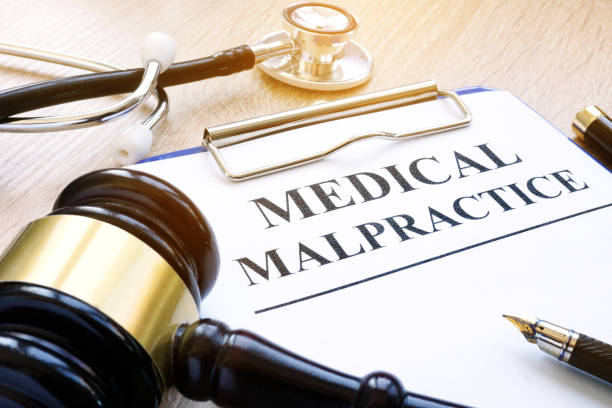In healthcare settings, illness and death can be expected, depending on the cause and patient. In many cases, healthcare providers can only do so much to prevent conditions from worsening. However, there are a few circumstances in which medical staff directly contribute to a patient’s declining health. Medical malpractice is when a medical provider is negligent in their medical care, resulting in the illness, injury, or death of a patient. Most people think of surgical errors as medical malpractice. While this is a common type of medical malpractice, patients should be aware of all malpractice indicators.
Contents
Surgical Errors
As previously mentioned, surgical errors are a common type of malpractice. Medical staff must pay strict attention to a patient’s vital signs, health conditions, and complex procedures during surgery. Surgeries are high-stress scenarios for everyone involved, which can result in mistakes. Some surgical errors involve the wrong procedure; when patients are mixed up, or charts are misread, doctors may not perform the correct procedure for the proper patient. Another form of surgical error is finishing a surgery without retrieving medical equipment or tools from the body; there have been many cases of medical tools causing further health problems when left behind during surgery. Surgeons may perform the correct procedure on the wrong body part, such as amputating the incorrect leg. While this is a rarer type of mistake, it still happens occasionally.
Misdiagnosis
Some illnesses or conditions share symptoms. For example, both irritable bowel syndrome (IBS) and Chron’s disease share symptoms of diarrhea and intestinal cramps. Misdiagnoses can be pretty common in the medical field for these reasons, but sometimes, a misdiagnosis results in delayed or inadequate care, which can cause worsening symptoms or even death. If a healthcare provider ignored or downplayed symptoms that resulted in harm or death, you may be eligible for a malpractice case. This can also extend to dental negligence claims, where a failure to diagnose conditions like oral infections or cancer can lead to severe consequences for patients.
Delayed Diagnosis
In some cases, a delayed diagnosis mimics the effects of a misdiagnosis. Failure to provide adequate care and testing for a condition may lead to the worsening of a condition, leading to permanent symptoms or death. For example, ignoring the warning signs of treatable breast cancer may result in the patient dying from breast cancer.
Wrongful Death
Unfortunately, medical malpractice can often result in the wrongful death of a patient. Death alone doesn’t indicate malpractice was a factor, but there are a few ways in which a healthcare provider’s negligence or error can cause wrongful death. Incorrect medications, misdiagnoses, or surgical errors that result in death may be the doctor’s fault. Consulting with an attorney in these cases is critical to determine eligibility and cause.
Lack of Sufficient Care
Medical staff should not neglect or ignore you when you seek medical attention. While wait times may vary, you should receive appropriate medical care once admitted. Medical staff may be liable for negligence or malpractice if they do not provide sufficient care to you. If they ignore your symptoms, don’t provide timely medications, or simply neglect to treat you, it can exacerbate conditions or even lead to death. When patients are admitted to hospital settings, there is an increased risk of fatal conditions like sepsis. Sepsis is the body’s overreaction to an injury or infection, which can lead to death when untreated. How long does it take to die from sepsis without treatment? Only a few hours. Timely treatment is essential. If medical staff do not pay attention to you or your symptoms, you can develop conditions like sepsis quickly.
Medication Errors
Medications can easily cause harm when inappropriately prescribed. Some patients do not receive medication when needed, causing damage or death. On the other hand, prescribing the wrong medication may result in serious harm as well. In some malpractice cases, medication is given in the wrong dosage, resulting in inadequate treatment or overdose. Ignoring a medical chart listing a medication allergy can also be a sign of malpractice. If a medication error harms a patient, it’s good to consult with an attorney to understand your rights and options.
Lack of Consent
Many medical treatments have risks, and patients must be fully informed before agreeing to any procedure. If a medical staff member fails to disclose these risks adequately to the patient, they can be liable for medical malpractice. Most medical procedures only carry small risks, but every risk must be dictated to the patient under a policy known as ‘informed consent.’ Malpractice is also a factor when a procedure is explicitly performed against the patient’s will.
Conclusion
Medical malpractice takes many forms. An incorrect procedure or patient can result in a medical malpractice lawsuit during surgery. Neglecting to care for a patient who needs emergency medical care can lead to death, which is also grounds for a malpractice suit. Misdiagnoses or delayed diagnoses can also count as a malpractice suit. If a doctor prescribes the wrong medication, too much or too little medication, it may also be a sign of malpractice. Consulting with an attorney to discuss case specifics and gather evidence is the best way to determine case eligibility for malpractice.




